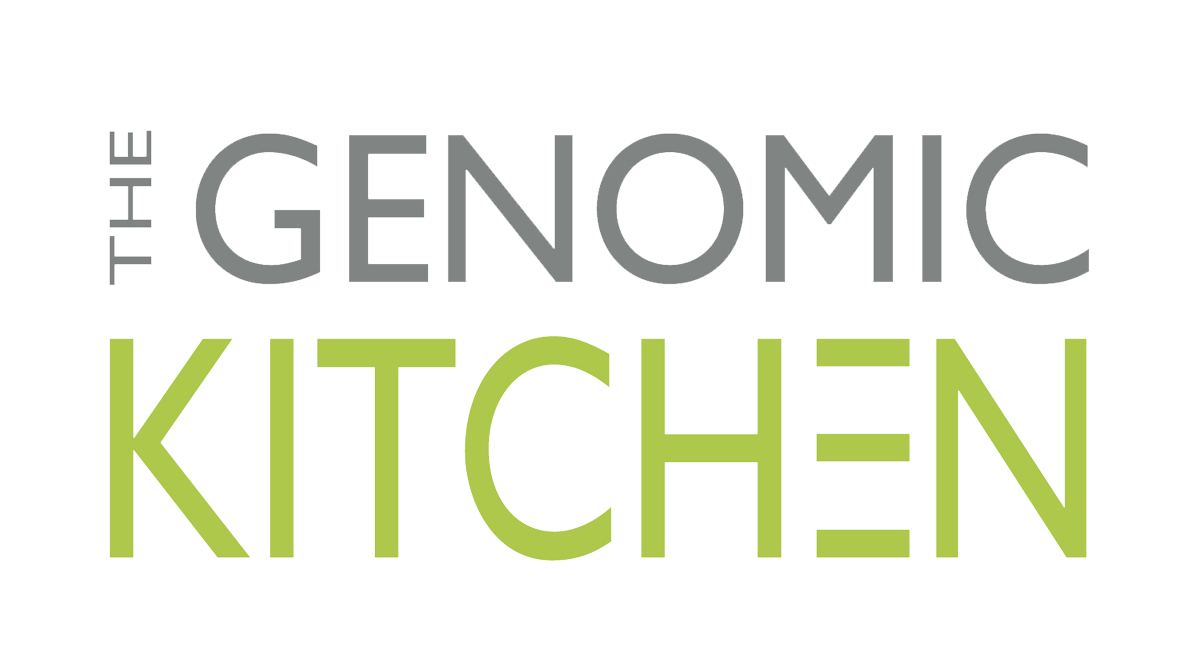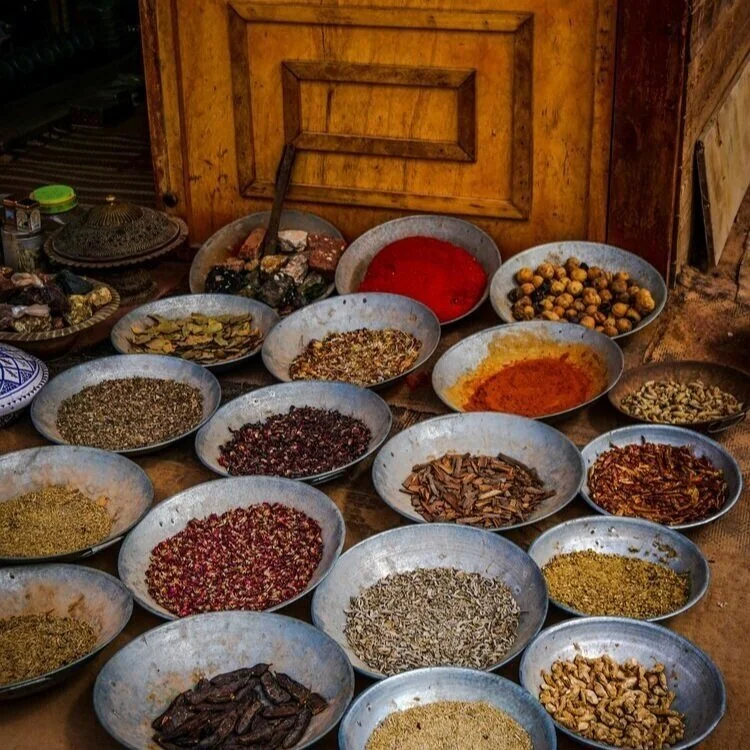Why and how to cook with turmeric and curcumin
/You may have heard of the spice turmeric, known for its main "bioactive" compound, curcumin. This root boasts a host of health benefits because it helps your body overcome inflammation. Inflammation is one of the underlying conditions common to so many diseases. Turmeric is not only an essential superfood for your optimal health and longevity, but it is also a delicious staple for your everyday cooking.
Here is why you should and eight ways how to cook with this amazing spice.
What are turmeric and curcumin?
Turmeric is a member of the ginger family. You are probably familiar with it as a dried spice, or powder. Turmeric spice is sold separately or blended into curry mixes, giving them their characteristic yellow hue.
Many of us are less familiar with the root form of turmeric. Turmeric root is frequently found next to fresh ginger root in the produce section of your store. It is smaller than ginger, certainly less knobby, and has a vivid orange hue versus the pale golden color of ginger root. Note the deep orange hue of turmeric root in the image.
Turmeric contains the bioactive curcumin. Curcumin is a powerful compound that reduces inflammation by turning certain genes on or off.
Curcumin is a health powerhouse
Some of the health benefits of curcumin range from improving osteoarthritis, alleviating depression, lowering your risk of heart disease and diabetes, and even preventing breast cancer. Many of these health issues are linked to a common origin, namely oxidative stress. When there is too much oxidative stress, it leads to inflammation.
The body naturally produces unstable free oxygen molecules called free radicals. Antioxidants can quench or stabilize these free radicals, preventing them from injuring or destroying cells and tissue. When the number of free radicals exceeds available antioxidants, oxidative stress occurs. This is important to understand because when oxidative stress is left unmanaged it leads to inflammation which is a foundation for most diseases.
Here’s the kicker. Oxidative stress causes inflammation. Too much inflammation causes more oxidative stress. It’s a cycle. And this is where curcumin plays a powerful trump card--by quenching free radicals.
Curcumin can work to stop the oxidative stress-inflammation cycle that underlies most diseases.
How curcumin fights inflammation through your genes
Curcumin helps break the oxidative stress-inflammation cycle and it does so by communicating with specific genes that we all have as humans.
Curcumin is a powerful bioactive which can turn on genes to produce powerful antioxidants. Far more powerful than the antioxidants you get from your diet, like Vitamin A and C. Curcumin can also turn off genes that produce inflammation. A little inflammation is okay. Uncontrolled inflammation is not.
So now you know the key to turmeric’s dazzling list of benefits. In a nutshell, its bioactive compound curcumin helps block inflammation cycles that cause disease. Eating turmeric because of its curcumin content is one thing I recommend to all of my clients.
Turmeric's bioactive compound curcumin helps control inflammation by turning certain genes on and off.
Quick tips for cooking with Turmeric
Now you know the health benefits of curcumin, let’s get cooking!
Food is the information your body uses to function, so we want to maximize the "information" turmeric provides to your body. In the case of turmeric, we want to ensure that its curcumin is available to work with those antioxidant producing genes.
To maximize absorption of curcumin, look for recipes that include black pepper and a good source of fat such as olive or coconut oil with your turmeric.
Curry blends usually include black pepper and are incorporated into dishes using fat. A win-win for your genes!
If you use fresh turmeric root, peel it and grate it similar to ginger.
Be aware that turmeric can stain hands and surfaces, just like red beets. Wear gloves or clean up right away. Washing your hands with a little oil before using soap can help remove any stain.
To store fresh turmeric root, either freeze it in a freezer-safe bag or glass jar. Or wrap in a paper towel and place it in a glass container or plastic bag in the fridge. If you don’t use it often, consider freezing it.
And one final nugget for you. Roasting turmeric root produces even more bioactive compounds capable of turning on those antioxidant-producing genes. A win-win!
8 simple to get cooking with turmeric
Savory ideas
My own go-to Curry Spice Blend includes turmeric along with many other food-gene talking spices!
Branch out into roasting veggies with turmeric herbs and extra virgin olive oil with this super tasty easy sweet potato recipe from Pink Fortitude
Get your day off to a good start with this super simple and uber-tasty kale and turmeric scramble from Zest For Cooking
A super simple cauliflower soup with turmeric and cashews from Piping Pot Curry. Oh and made in the Instant Pot for your fans!
A luscious quinoa salad made with turmeric, walnuts and pomegranate seeds. What's not to love? From Wendy Polisi
Our in-house Indian Cauliflower Curry.
Something Sweet
A delicious tropical fruit bowl with turmeric and yogurt. Mix and match your tropics to suit your palate and your pocketbook from Natalie’s Health
Something Soothing
Attainable Sustainable makes a sweet and powerful “shot”of turmeric and ginger coated with honey. It helps soothe your throat and give your immune system a boost too!
An All-Rounder Turmeric Paste for Your Kitchen
Spice up your food and your genes with this beautiful turmeric paste from Savory Lotus. Add it to milk for a delicious beverage, or to stir-fries, stews or rice for potent flavor!
Our courses teach you how to cook for your genes!
Culinary Professionals
Discover our live workshop for chefs in Detroit, and online course in culinary genomics
Health Professionals
Discover our live workshop in Detroit and our online courses in culinary genomics and genomics
References
Al-Karawi, D., Al Mamoori, D. A., & Tayyar, Y. (2016). The Role of Curcumin Administration in Patients with Major Depressive Disorder: Mini Meta-Analysis of Clinical Trials. Phytotherapy Research, 30(2): 175-83. doi: 10.1002/ptr.5524. LINK: https://www.ncbi.nlm.nih.gov/pubmed/26610378
Hewlings, S. J., & Kalman, D. S. (2017). Curcumin: A Review of Its' Effects on Human Health. Foods (Basel, Switzerland), 6(10), 92. doi:10.3390/foods6100092LINK: https://www.ncbi.nlm.nih.gov/pmc/articles/PMC5664031/
Kunnumakkara, A. B., Bordoloi, D., Padmavathi, G., Monisha, J., Roy, N. K., Prasad, S., & Aggarwal, B. B. (2017). Curcumin, the golden nutraceutical: multitargeting for multiple chronic diseases. British journal of pharmacology, 174(11), 1325–1348. doi:10.1111/bph.13621LINK: https://www.ncbi.nlm.nih.gov/pmc/articles/PMC5429333/
Mokbel, K., & Mokbel, K. (2019). Chemoprevention of Breast Cancer With Vitamins and Micronutrients: A Concise Review. In vivo (Athens, Greece), 33(4), 983–997. doi:10.21873/invivo.11568LINK: https://www.ncbi.nlm.nih.gov/pmc/articles/PMC6689356/
Shimizu, K., Funamoto, M., Sunagawa, Y., Shimizu, S., Katanasaka, Y., Miyazaki, Y., … Morimoto, T. (2019). Anti-inflammatory Action of Curcumin and Its Use in the Treatment of Lifestyle-related Diseases. European cardiology, 14(2), 117–122. doi:10.15420/ecr.2019.17.2LINK: https://www.ncbi.nlm.nih.gov/pmc/articles/PMC6659038/
Yang, M., Akbar, U., & Mohan, C. (2019). Curcumin in Autoimmune and Rheumatic Diseases. Nutrients, 11(5), 1004. doi:10.3390/nu11051004LINK: https://www.ncbi.nlm.nih.gov/pmc/articles/PMC6566522/













